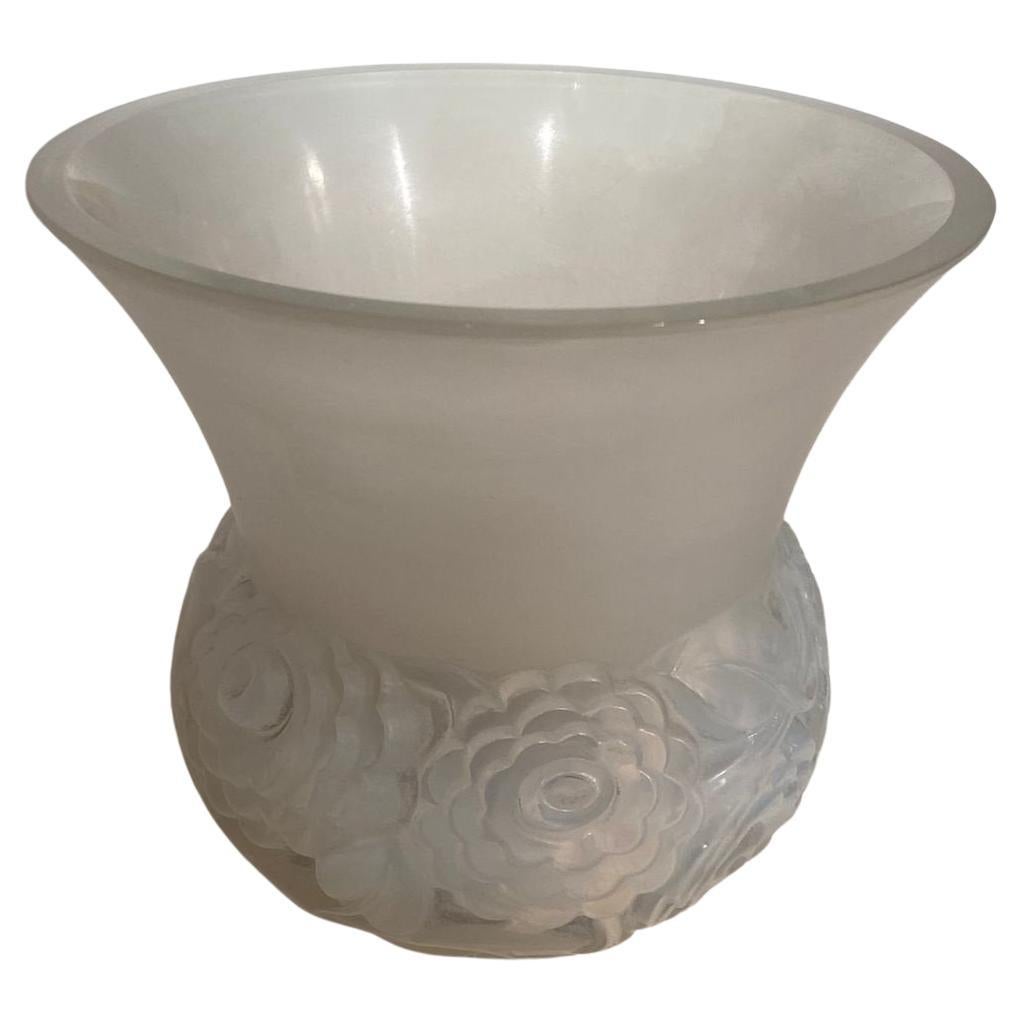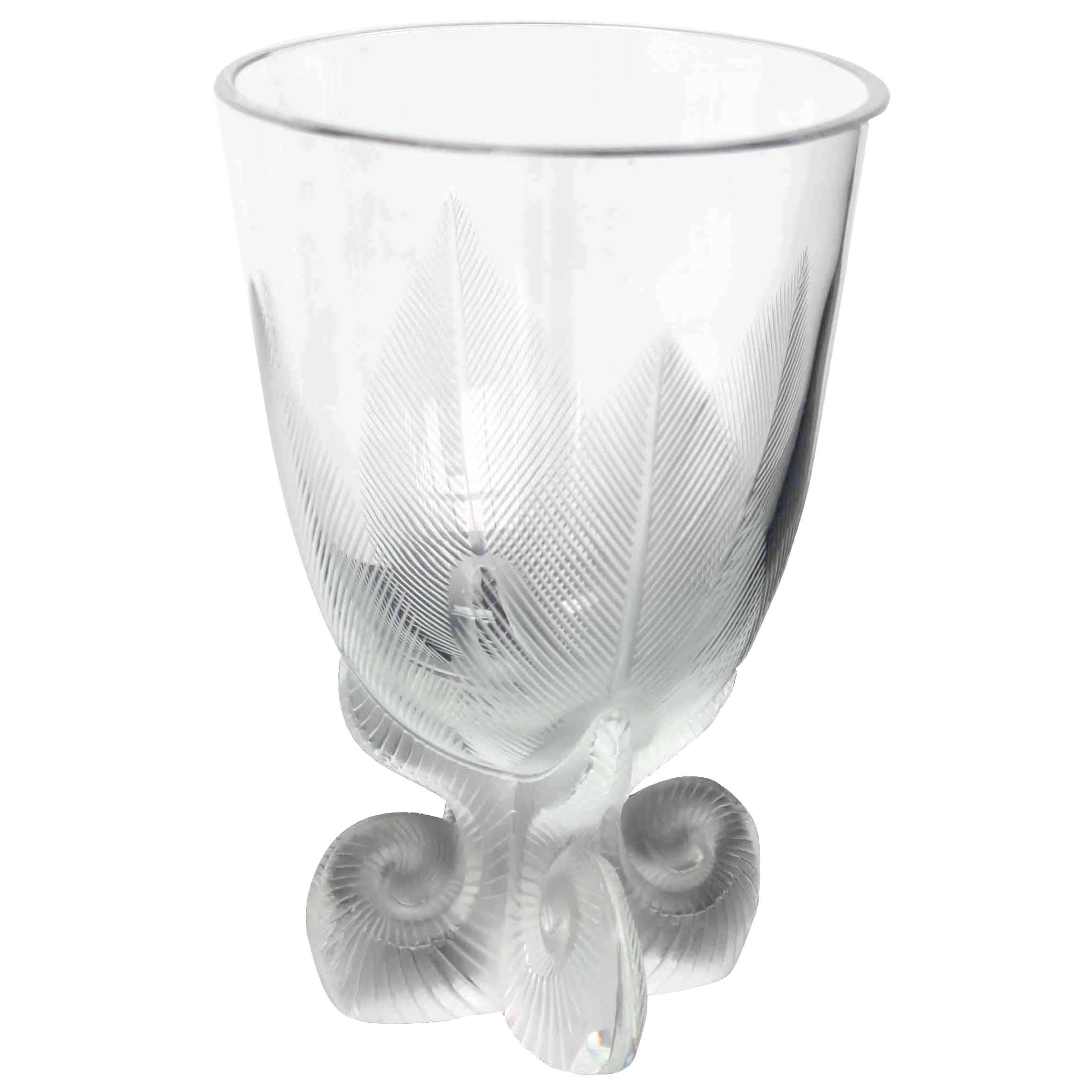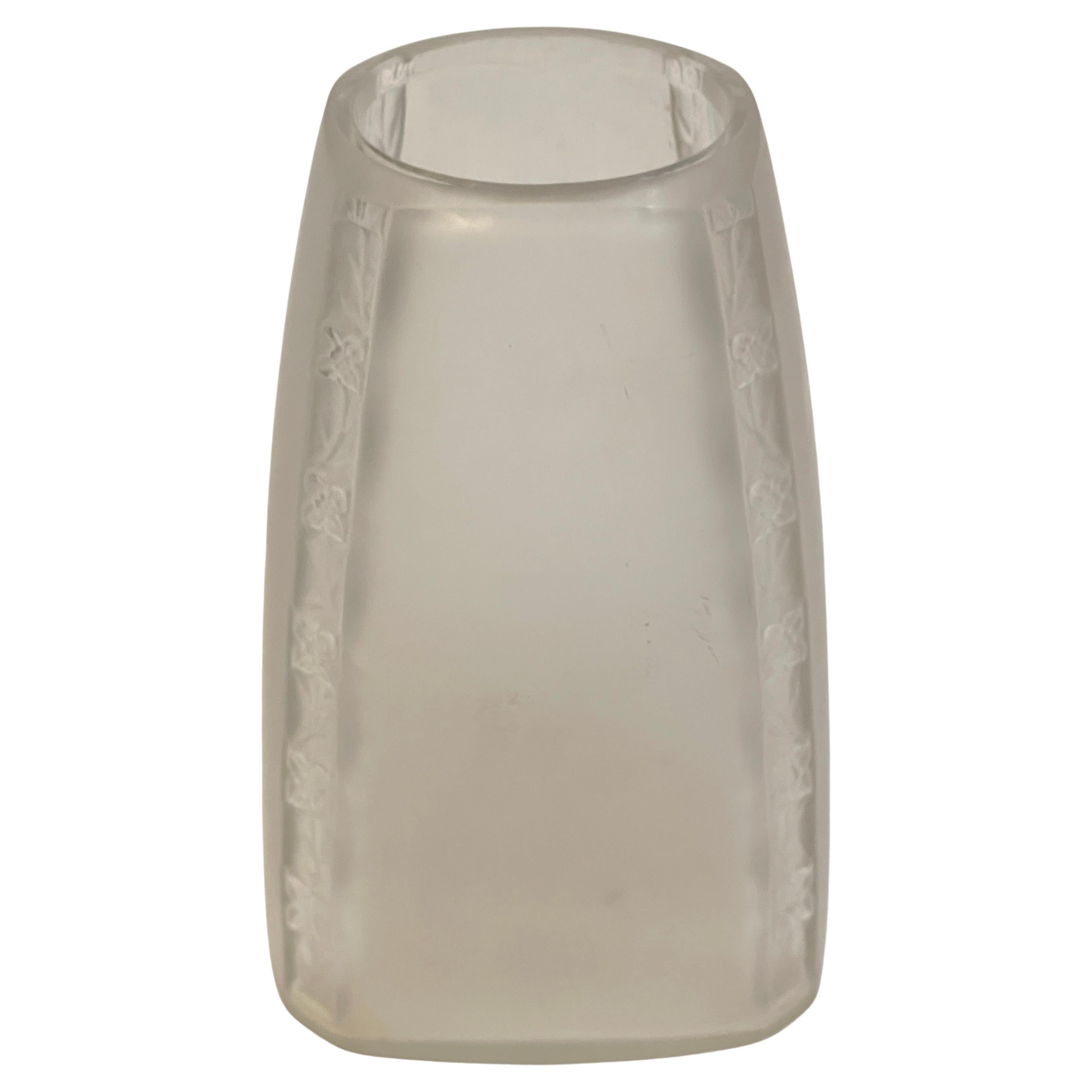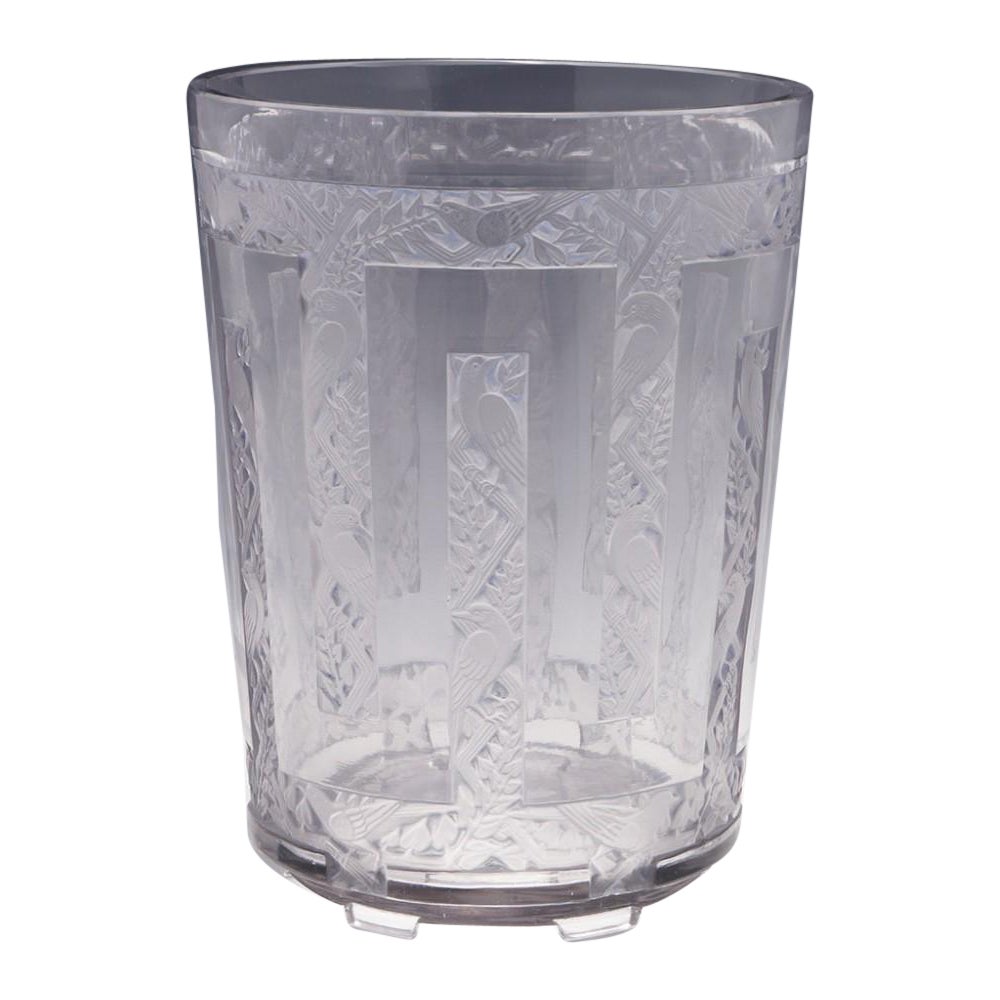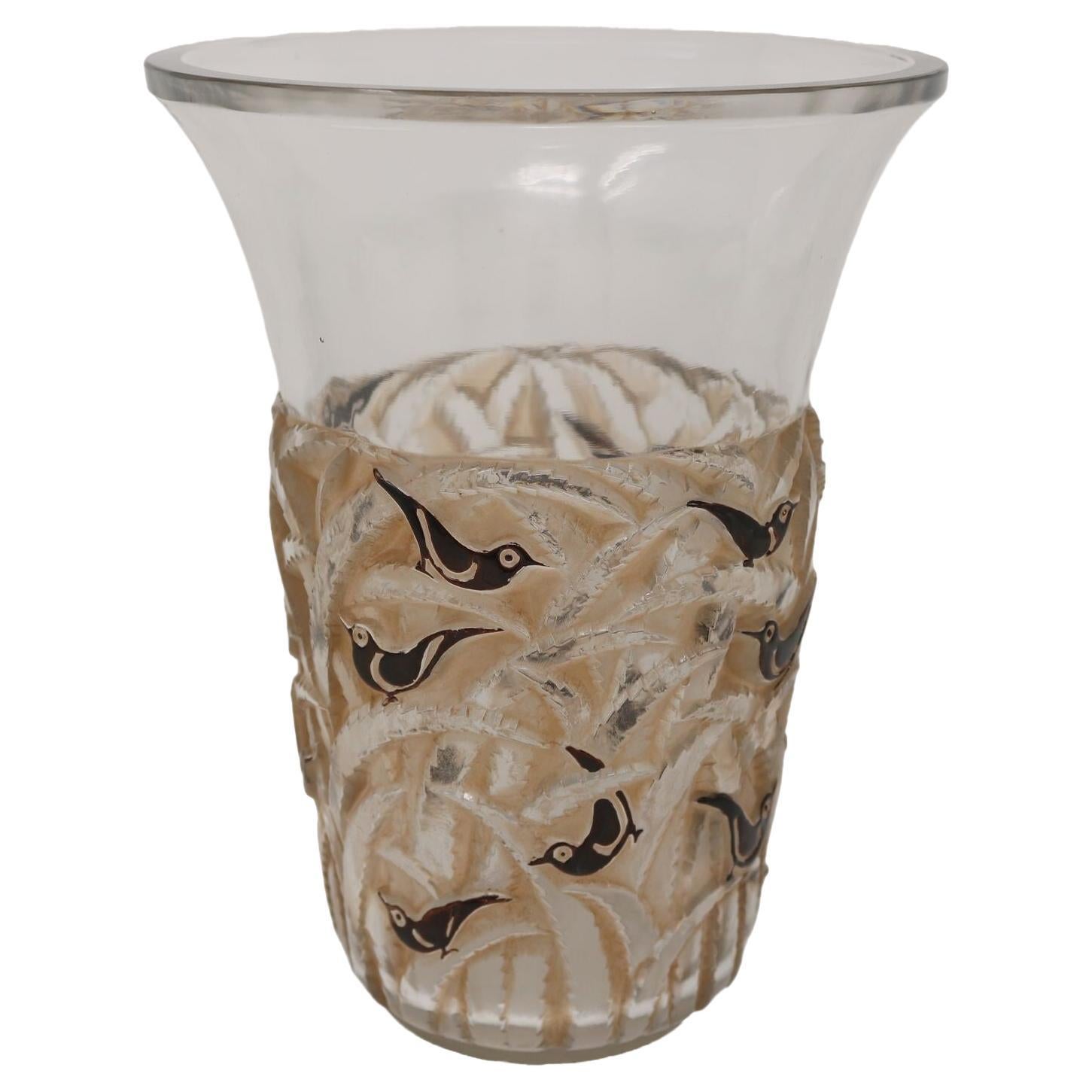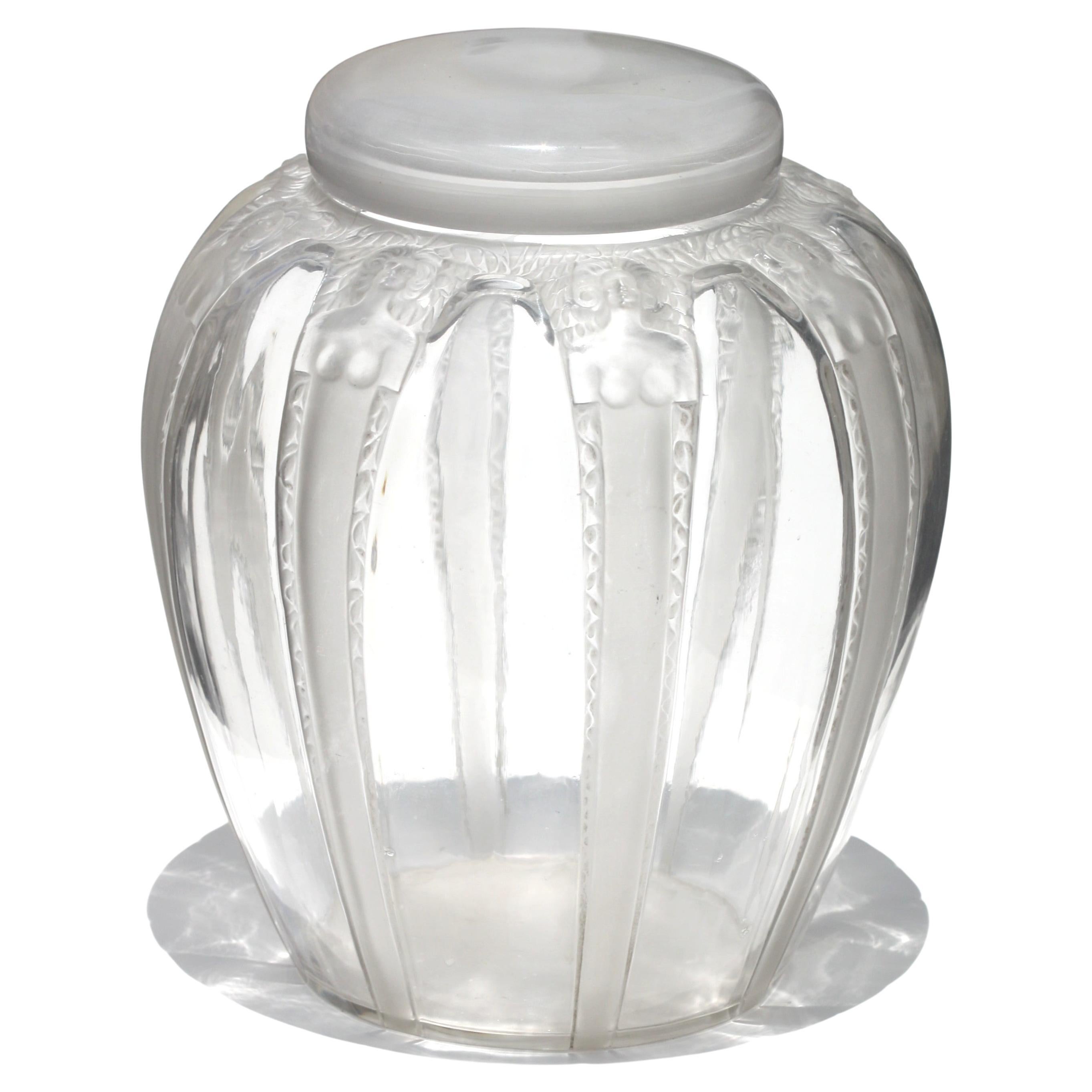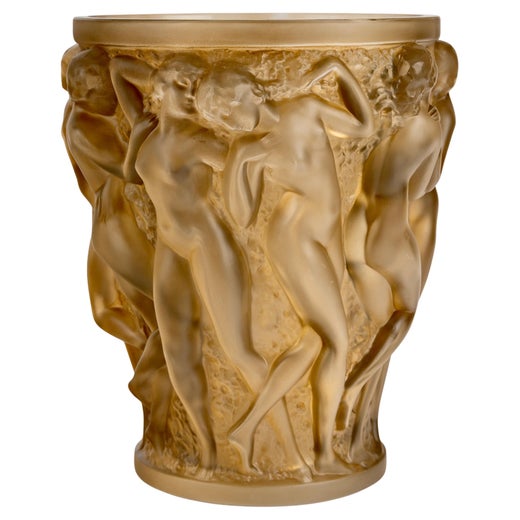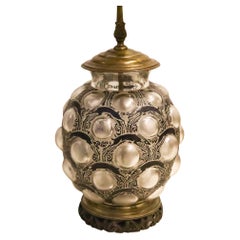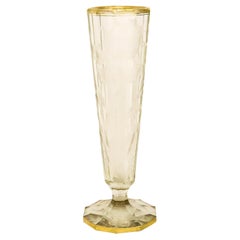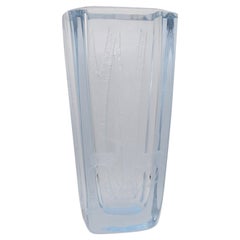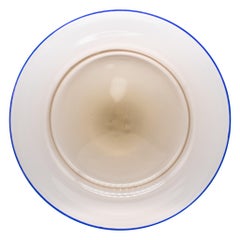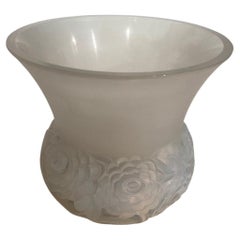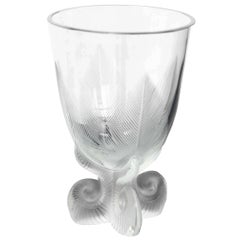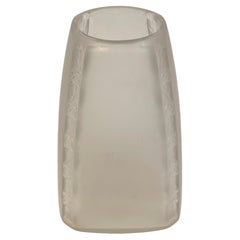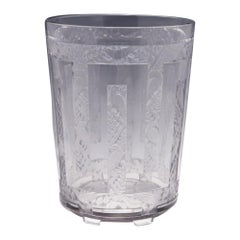Rene Lalique 1922 France Art Nouveau Dahlia Lotus Flower Art Glass Tumbler M3404
About the Item
- Creator:René Lalique (Designer)
- Dimensions:Height: 3.48 in (8.84 cm)Diameter: 2.94 in (7.47 cm)
- Style:Art Deco (Of the Period)
- Materials and Techniques:
- Place of Origin:
- Period:
- Date of Manufacture:1922
- Condition:Minor losses. Literature: Rene Lalique, Catalogue Raisonne De La Oeuvre De Verre, Felix Marcilhac. model 3404, Illustrated. It is a great display piece in great antique condition with one flea bite at the top ribbon.
- Seller Location:Miami, FL
- Reference Number:Seller: D0000JAEL/.11111stDibs: LU8303233969352
René Lalique
The career of the famed jewelry designer, glassmaker and decorative artist René Lalique spanned decades and artistic styles. Best known today for his works in glass, Lalique first won recognition for his jewelry. He was described as the inventor of modern jewelry by the French artist and designer Émile Gallé, and his luxurious naturalistic designs helped define the Art Nouveau movement. Later as a glassmaker in the 1920s and ‘30s, Lalique designed vases, clocks, chandeliers and even car hood ornaments that were the essence of Art Deco chic. Even now, the name Lalique continues to be a byword for a graceful, gracious and distinctively French brand of sophistication.
Born in 1860 in the Marne region of France, Lalique began his career as a jewelry designer in the last decades of the 19th century. His work employed now-classic Art Nouveau themes and motifs: flowing, organic lines; forms based on animals, insects and flowers — all rendered in luxurious materials such as ivory, enamel, gold and semi-precious stones. By 1905, Lalique had begun creating works in glass, and his style began to shift to a cleaner, sharper, smoother, more modern approach suited to his new medium. His Paris shop’s proximity to perfumer François Coty’s led him to experiment with beautiful perfume bottles. He offered the first customized scent bottles, transforming the perfume industry. By the end of the First World War, the artist had fully embraced Art Deco modernity, devoting himself to new industrial techniques of glass production and designs that manifest the sweeping lines and the forms suggestive of speed and movement characteristic of the style. Lalique’s work looked both backward and forward in time: embracing ancient mythological themes even as it celebrated modern progress.
Late in his career, Lalique took on high profile luxury interior design projects in Paris, Tokyo and elsewhere. He designed decorative fixtures and lighting for the interior of the luxury liner Normandie in 1935, and decorated the salons of well-known fashion designer Madeleine Vionnet. Today, Lalique’s influence is as relevant as it was when he opened his first jewelry shop in 1890. In a modern or even a traditional décor, as you will see from the objects offered on these pages, the work of René Lalique provides the stamp of savoir-faire.
- ShippingRetrieving quote...Shipping from: Miami, FL
- Return Policy
More From This Seller
View AllVintage 1920s French Art Deco Table Lamps
Enamel
Antique Early 1900s Czech Art Nouveau Vases
Gold
Vintage 1950s Swedish Mid-Century Modern Vases
Art Glass
Vintage 1920s Italian Art Deco Vases
Glass, Art Glass
Antique Early 1900s English Edwardian Decorative Bowls
Sterling Silver, Enamel
Vintage 1920s French Art Deco Jars
Crystal, Gold
You May Also Like
Vintage 1930s French Art Deco Vases
Glass
20th Century French Mid-Century Modern Vases
Glass
20th Century French Art Deco Vases
Glass
20th Century French Art Deco Vases
Crystal
Vintage 1930s French Vases
Glass
20th Century Vases
Glass
Read More
This Richly Textured Jean Mahie Cuff Was Designed in 1978 But Still Feels On Trend
Imbued with a subtle eroticism, this piece inspired by the aesthetics of ancient civilizations is 22-karat gold at its absolute sexiest.
Hunt for Thrilling Artist-Signed Pieces and Estate Gems at Treasure Fine Jewelry
A former architect, owner Edoardo Grande seeks out pieces with unparalleled workmanship and sculptural appeal.
